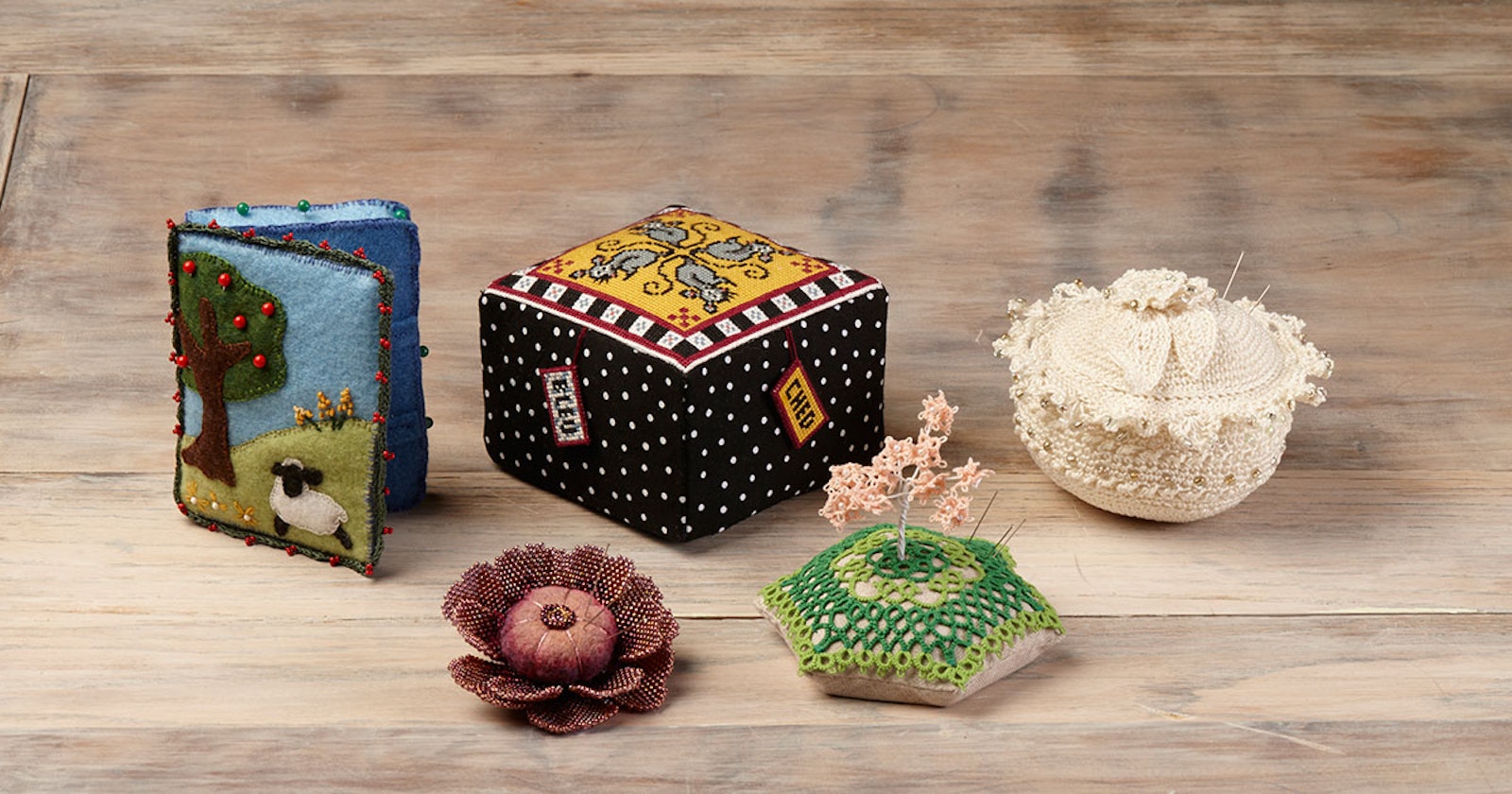Over the years, we have had a variety of PieceWork contests for our readers to showcase their stellar needlework skills. The inaugural contest featuring pincushions was among the most popular—a testament to the importance of this needlework necessity.
The September/October 1999 issue of PieceWork included our announcement for this inaugural PieceWork Pincushion Contest in 2000 along with Dorothy Panaceck’s article on the history of pincushions. Here are a few of the fascinating facts from Dorothy’s article:
Ana Garcia’s beaded Lotus Blossom pincushion.
“Pins, needles, and pincushions are commonplace today. Before the invention in the 1820s of machinery to make pins, however, pins and needles were precious handmade commodities. Women often had only one fine needle; farmers would trade crops for needles and pins; estate inventories and wills from the fourteenth and fifteenth centuries included needles and pins. Pins were so expensive and scarce in England throughout the fourteenth and fifteenth centuries that Parliament limited the sale of pins to the first two days of January each year. Women saved all year to have enough money to buy pins on the sale days (this is the origin of the term “pin money”). A place to keep these valuables from getting lost, rusty, or dull was thus a very important needlework accessory.”
The first, second, and third place winners of the inaugural PieceWork Pincushion Contest were announced in the July/August 2000 issue. Step-by-step instructions and any necessary charts and illustrations for making the three winning pincushions are included.
Tamara Webb’s tatted pincushion Cherry Blossoms in Washington D.C.
As with the previous contests, the 2015 Pincushion Contest was a hit. We were amazed by and delighted with the entries. Our sincere thanks go to each person who entered and to our generous sponsors who provided $250 in products for the five first-place winners. In addition to our first-place and honorable mention winners, our judges also selected five of the entries for a PieceWork eBook, Pincushions: 5 New Pincushion Designs to Bead, Crochet, Tat, Cross-Stitch, and Appliqué! Here you will find instructions for making these five amazing pincushions and information on the companies that were our 2015 contest sponsors. Enjoy!
—The PieceWork Staff
Download a copy of the PieceWork eBook Pincushions: 5 New Pincushion Designs to Bead, Crochet, Tat, Cross-Stitch, and Appliqué _to stitch your own delightful pincushion. Read about a whimsical Victorian pincushion in our blog post, “Victorian Pincushions: Weldon’s Toilet Pincushion.”
The five pincushions selected for the PieceWork eBook, Pincushions: 5 New Pincushion Designs to Bead, Crochet, Tat, Cross-Stitch, and Appliqué. Photos by Joe Coca.



